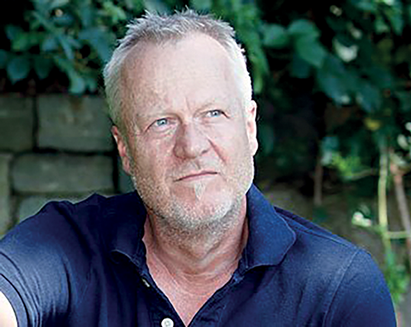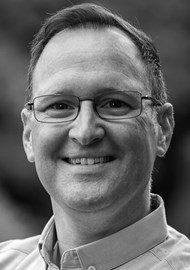
So your background is in social research, how did you develop an interest in this area?
I have always had an immense curiosity when it comes to understanding other people and other cultures. My early experience as a teenager in Sri Lanka inspired me to want to learn more and eventually led me to study social anthropology. My studies opened my eyes to the power and insights ethnographic documentaries can bring to us. After I earned my Bachelor’s degree, I was given an opportunity to join Ateliers VARAN, the legendary French documentary film school. My graduation film portraying everyday life and death at the famous Parisian Cemetery, Père Lachaise, was awarded best graduate film. I know I owe that achievement to my persistent curiosity!
My ethnographic fieldwork in Mexico on ‘Rumour and Gossip as Social Resistance’ revealed that gossiping is not only an informal communication form, but also good for you. Studies on the ‘low-voiced’ activity of gossiping show that without participating in the network, it is much more difficult to develop your own identity, create friendships and manage social finesse. And of course, if you cannot participate in the low-voiced sharing of the network – as may be the case when a person suffers from hearing loss - you are deprived of an important resource for information. Another good reason to do something about hearing loss as soon as possible.
So tell me more about the study of anthropology, and more specifically about ethnography as a methodology
Social anthropology is the study of man or peoples everywhere – what we make, what we do, what we think and how we make sense of it all by busily organising our social relationships and societies.
Ethnography is what anthropologists do when they study people. It was actually invented by coincidence by the Polish anthropologist Bronislaw Malinowski. Because of his citizenship, he was interned during a short visit to the Trobriand Islands during the First World War. The common method of collecting data at that time is referred to as ‘armchair-anthropology’. This meant having a long queue of local informants waiting in line on the porch to report on their customs, habits, kinship, religion, etc. However, being confined to a Pacific island, Bronislaw grew tired of his armchair, stretched his legs and began visiting villages. He started living with the people he was studying, engaging in their communities, learning their language, eating their food, and taking part in their everyday life. By doing this, he discovered a big gap between what people say they do and what they actually are doing and thinking. The ethnographic method of participatory observational fieldwork was invented. We use this method to produce in-depth understandings of people and cultures that are designed to uncover hidden patterns and emerging structures that can test our existing understanding. And hopefully create new theoretical insights.
How did you come to be involved in audiology?
Well, like Malinowski, by coincidence you might say. I was actually on my way back from three years in Uganda where I held a position as a senior health advisor at the Norwegian Ministry of Foreign Affairs. I had a job waiting for me at the Danish National Board of Health, but when I saw this interesting job ad at the Ida Institute, things changed. I had limited experience working with hearing loss from both former jobs. What really got me excited was the opportunity to combine my knowledge from the health care area with my ethnographic skills - especially the possibility of creating new insight through ethnographic films.
Your recent article in Audiology Today Rite of passage: An alternative approach to rehabilitation presents the argument that people with acquired hearing loss transition through a three phase journey and that hearing healthcare managers are well placed to guide individuals through that journey – Obi-Wan to Luke style – can you summarise this interaction for our readers?
The rite of passage is one of the oldest and most fundamental cultural and social practices we are engaged in; we have just forgotten it.
The rite of passage is based on the fact that when people go through life-changing transitions, they do so in a tripartite way. First separation, then liminal or threshold and finally reintegration back into “normal” society again. The impact of life-changing events is characterised as being unknown to us before we come out on the other side. There have always been indispensable wise mentors, senseis, shepherds and Obi-Wan Kenobis that help and coach us through the journey. The reasoning behind this ancient tradition has lately been reinvented. It has shown to be a very successful counselling method in empowering people to pass through difficult stages of life. Evidence from soldiers’ redeployment to combat, treatment of cancer patients, social rehabilitation of disabled people, and insight into consumer behaviour has been very compelling.
My point in the article is that the timing is right for hearing care professionals to be inspired by the rite of passage. As a hearing care manager, you belong to the ‘elders in the village’, the experienced mentors that guide and support clients to manage their situation and empower them to take action. You are an expert in communication, up-to-date on best practice, and can help people understand what to expect as they continue on their journey. As an elder, the hearing-care manager also knows about behaviour and emotional comportment that reflect the prevailing values on the meaning of hearing loss within the given culture.
A successfully performed rite of passage brings order to the chaotic and confusing phases in life, for those involved and also for the surrounding society. It helps us understand, accept and adapt to the necessary transition that we all are faced with in different phases of our lives.
See www.audiology.org/sites/default/
files/publications/RiteOfPassage.pdf.
So do you feel that the education of hearing care professionals needs to refocus? What do you feel are the challenges for hearing healthcare in the future?
At the Ida Institute, we have always been very engaged in providing educational material for counselling, especially within patient-centred care. One of Ida’s collaborative flagships is the university course. It compiles most of the Ida ‘Tools’ and will be available online in a new updated version by July 2015. For the last two years, we have been engaged, together with more than 100 audiologists worldwide, in our Vision 2020 project - co-creating the future of hearing care. Among other topics, we were looking at what it takes to be ‘future-proof’ as a hearing care manager in 2020.
“As a hearing care manager, you belong to the ‘elders in the village’, the experienced mentors that guide and support clients to manage their situation and empower them to take action.”
The challenges are real and building. Recent technological breakthroughs with self-fitting and self-adjusting technology, demand for tele-audiology and changing healthcare systems with limited resources tasked with providing services to an ageing population are just a few. Working with these challenges, we anticipate a need for skills, which will focus on a more personalised service and talents in community outreach including services via social media. Tele-audiology will also be part of the everyday activities of the health care manager of the future. This means that the management of hearing tests and the fitting of instruments online should be a skill acquired by 2020. Most of all, we believe that investing in counselling and patient-centred care will become even more relevant and also a way hearing care professionals can ‘future-proof’ and distinguish themselves in the hearing care market. The importance and added value of being able to assist the client all the way along the life-long journey is crucial. To me this is an excellent opportunity. So yes, I see a need to refocus.
What does your average day look like at the Ida Institute?
It is seldom the same when you work in a multi-disciplinary team. And I like that. Collaboration is key, which means we very often involve our network of more than 10,000 members in the work we do. I am regularly planning virtual meetings on the topics we are developing. Developing seminars, workshops and international meetings are also among the activities we do a lot of at Ida. When we are developing new tools and counselling methods, we very much depend on inputs and insights from the real-world experience of practising audiologists and their patients. Where are the real challenges, gaps and opportunities? It has been part of my job description to provide these insights through the production of ethnographic videos. So, producing videos for a wide range of purposes also forms part of my average day at the Ida Institute. Some of the more than 100 videos I’ve produced are available on our website, www.idainstitute.com.
And what are you working on right now?
Right now, I am part of a team planning a project with the working title, ‘Patient Centred Care within a Tinnitus Context’. I am also working on a cochlear implant project finalising four remarkable videos from the UK and South Africa. And I am involved in our collaborative Vision 2020 project and in the process of updating our online Ida Tools.
What would be your ‘must read’ for audiologists?
I would definitely say the Editor’s Choice for best article in Ear and Hearing in 2013: Laplante-Lévesque A, Hickson L, Worrall L. The stages of change in adults with acquired hearing impairment seeking help for the first time: application of the transtheoretical model in audiologic rehabilitation. (Ear and Hearing 2013;34(4): 447-57). A free PDF of the article is available at this link: http://bit.ly/1FS4cUQ
And when not at work, how do you relax?
Besides spending time with my family and friends, I love cooking, mountain biking, bird watching, fishing and my old BMW.
Interview by Gareth Smith.




